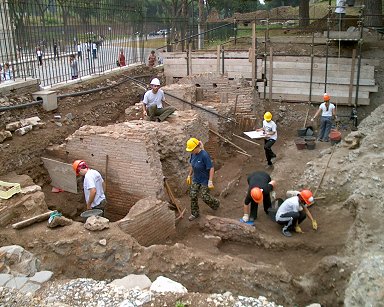Most of the housing data we are seeing lately points to a resurgence in the housing market as steady rebound in the number of homes sold this year continues to grow quarter over quarter. This growth points to an increase in the number of first time home buyers or seasoned professionals beginning their search for their first or next home. As is often the case, a home buyer begins their journey evaluating a home based on principles like price, location, school systems and the home’s ability to meet the needs and wants of their family. However, it is rarely the case a home buyer takes a look under the hood before making an offer. Often, home buyers leave the inspection process until after the Offer is accepted and before the Purchase and Sale is signed. Although it is highly recommended a homeowner work with inspection professionals before making a commitment (Purchase & Sale), it should be equally important that the home buyer educate themselves on various areas within home that might require upgrading, replacing or rebuilding in order to meet the demand of the modern family and their safety.

The following home buyer tips should provide some insight and could be used as an evaluation checklist for home buyers as they begin their search.
Foundation.
The foundation is one of the most important considerations a homebuyer should evaluate, when looking at a home. As you might expect older homes built upon field stone should draw close scrutiny, but this is not to say new home construction is without flaw. A field stone foundation should always be checked to insure wall gaps, cracks and voids are not present. Walking around the interior perimeter walls looking for deposits of debris on the floor caused from decaying material used to secure the stone in place could provide some evidence of potential concern. Homes built on poured concrete foundations or concrete block should be checked for stress fractures, cracks, voids, and appearance of a bulging or unleveled vertical wall.
Electrical.
Today’s modern family relies heavily on technology, which demands much from a home’s electrical system. Older homes which still have a 60 or 100 AMP services maybe subjected to what is known as double and triple tapping. What does that all mean in simple terms? Generally when additional electrical lines are added to a home to meet the demand of new appliances, renovation or additions to these lines are connected at the electrical panel. Each panel has a specific number of fuses (60 amp) or breakers (100 or 200 amp) allowed in the panel and each fuse or breaker is designed to handle one signal electrical line. Unfortunately rather than expanding the electrical panel with a sub-panel or larger main panel, sometimes you will see two or even three electrical lines attached to a single fuse or breaker. This is called double and triple tapping, it’s illegal and can be a safety issue.
Plumbing.
Older homes often mean older pipes. Considering that old pipes may be subjected to decay, rust and corrosion, inspecting for leaky pipes is a must. Generally in the basement where the plumbing pipes are exposed, look for water drips near areas where two pipes come together (unions, elbows, and ball or gate valves). Flush toilets and check to see they operate correctly. Check for faucets that drip. If the home has its own Well, check to see that there is sufficient water pressure, by turning on the shower and monitoring its output then turn on sink faucets and flushing the toilet at the same time. See what effect if any the added water demand has on the shower output.
Heating, Ventilation, and Air Conditioning.
The HVAC system much like most systems within a home has a useful life and depending on the manufacturer that can vary dramatically, but generally a system with 25 years of use or more, should draw some concern. Also check for a maintenance tag or sticker provided by the servicing HVAC contractors indicating prior inspections and system efficiency.
ABOUT THE AUTHOR: Roger Martin is a Massachusetts Realtor with Century 21 Commonwealth. Roger is a unique blend of both Realtor and licensed General Contractor with over 20 years of experience building Custom Homes, Renovation and Design. Serving the Ashland, Brookline, Chestnut Hill, Concord, Dover, Framingham, Lexington, Marlborough, Natick, Needham, Newton, Sherborn, Sudbury, Wayland, Wellesley, Westborough, Weston, and surrounding areas.
Hi! I’m Maria, the Marketing Coordinator for Homes.com. I am part of a dream team that is dedicated to running this awesome blog along with Homes.com’s social channels. If I am not busy writing blogs and socially sharing for Homes.com, you can find me painting, drinking tea with my friends, and doing DIY projects!

















